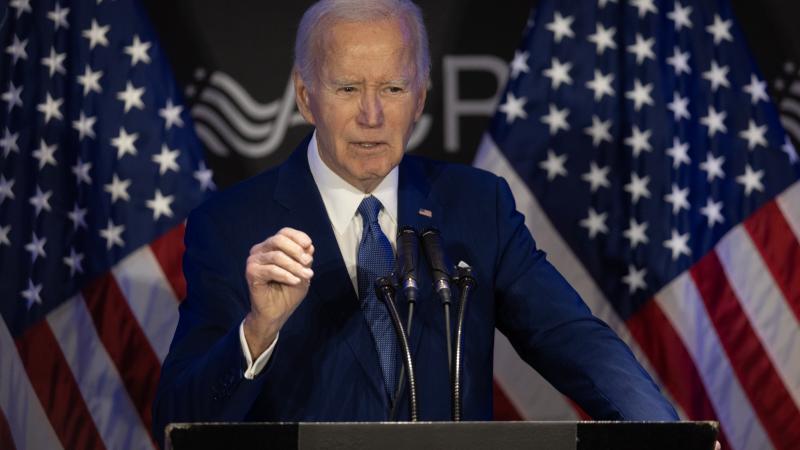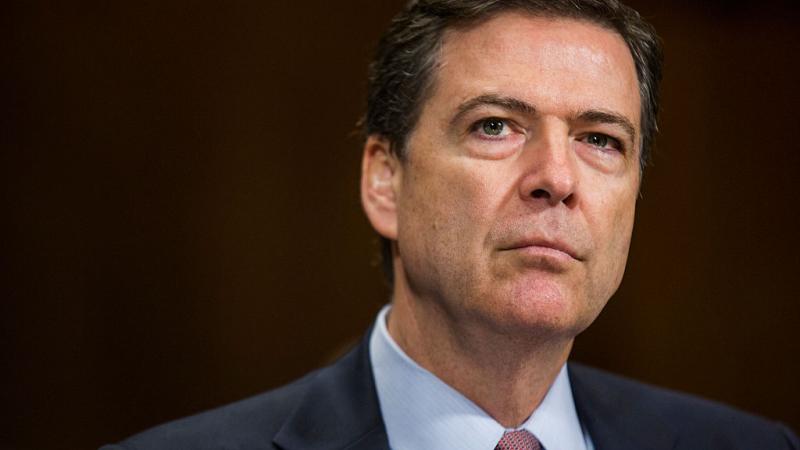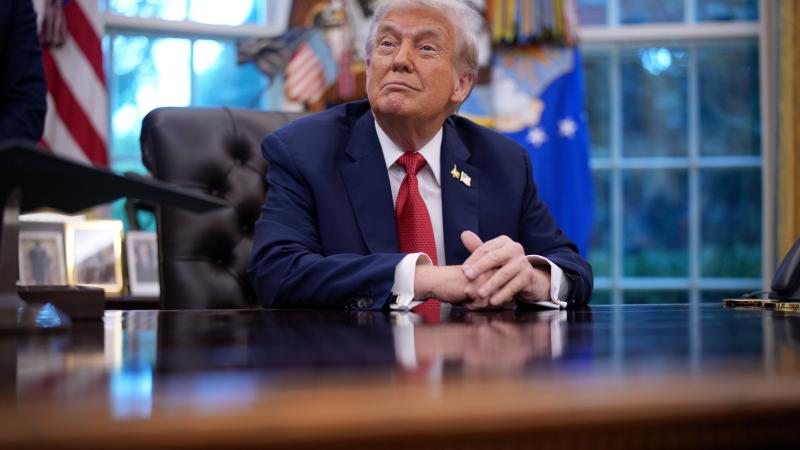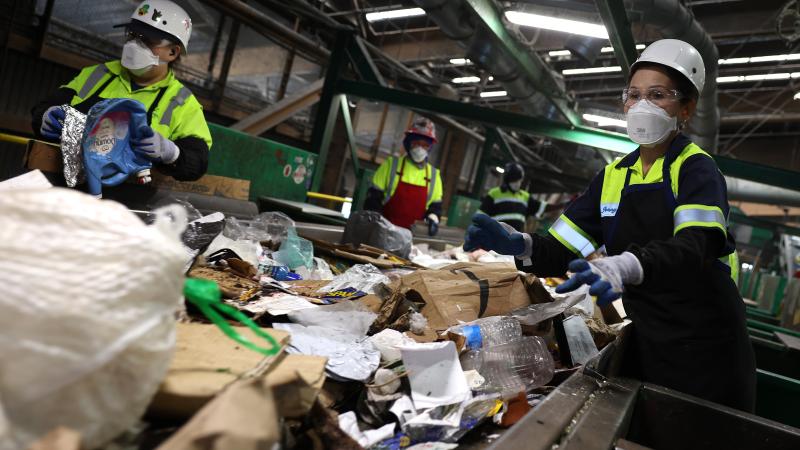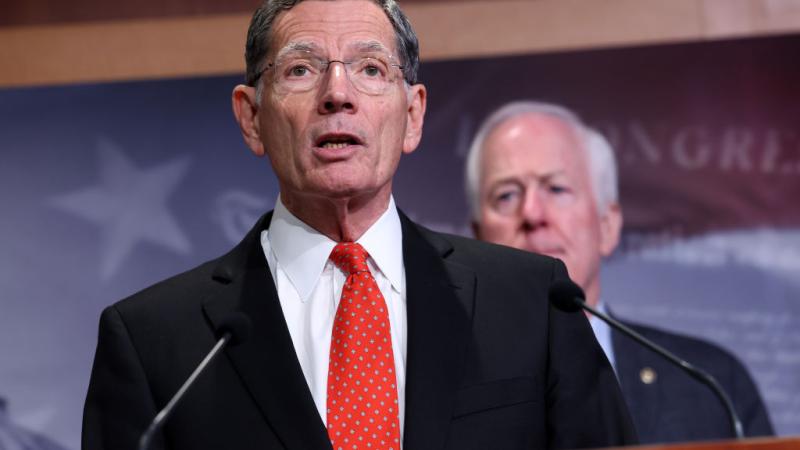Trump turns Democrats' green dreams into steam
In seven months, Trump has vaporized sixteen years of green climate policies, subsidies and industry mandates.
Seven months into his second term, President Donald Trump has bulldozed nearly the entire mountain of green policies enacted by Democrats at the behest of their progressive counterparts. Critics long claimed "The Green New Deal" was not only costly, but ineffective.
The Obama-era endangerment finding, based on Section 202(a) of the Clean Air Act, designated carbon dioxide, methane and four other greenhouse gases as threats to public health and welfare.
In March of this year, Zeldin called this the "most significant deregulatory step in U.S. history," predicting substantial economic benefits and job creation. He criticized the 2009 finding, enacted in 2010 under former President Barack Obama, for imposing expensive regulations on industries like transportation and aviation, which strained the economy.
The decision is emblematic of Trump's deregulation priorities and his executive order to reassess the finding’s legal basis and reduce regulatory burdens to boost American energy production.
Those policies appear to fall in line with recent polls that explain Trump's overwhelming 2024 election victory. An AP/University of Chicago poll taken last month found that "Public support for green energy tax credits and renewable energy expansion has declined compared to 2022. Only about 4 in 10 favor providing tax credits for the purchase of electric vehicles, down from half in an AP-NORC poll conducted in September 2022. Support for solar panel tax credits also declined from about two thirds to just over half." The poll was conducted using online and telephone interviews with 1,158 adults. The overall margin of sampling error is +/- 4.0 percentage points.
Here's a look at some of the more significant policy changes the Trump administration is making:
-
Withdrawing and re-withdrawing from the Paris Climate Agreement
President Trump's decision to withdraw from the Paris Climate Agreement in 2017 was based on prioritizing American economic interests and sovereignty over placating those he characterized as climate alarmists. By decoupling from the agreement, his first administration aimed to unleash the potential of U.S. energy industries.
Former President Joe Biden rejoined the accord, forcing Trump to re-withdraw in January. The non-binding nature of the agreement, which Trump roundly criticized on the campaign trail, coupled with its potential to impose costly regulations, he argues, placed an unfair burden on American businesses while allowing other nations, like China, to continue polluting with fewer restrictions.
-
Declaring a national energy emergency declaration
One of Trump's first acts as president was to declare a national energy emergency through Executive Order 14156, marking the first time a U.S. president has taken such a large step. The directive, it is planned, will bolster American energy independence by accelerating fossil fuel production, streamlining permitting processes, and reducing regulatory barriers, which should lower consumer energy costs and strengthen national security.
The declaration, rooted in the National Emergencies Act, aims to prioritize domestic energy resources like oil, gas, coal, and uranium, citing high energy prices and an increasingly unreliable grid as threats to the economy and national security. Proponents believe this move will unlock economic potential, create jobs, and enhance U.S. global competitiveness by leveraging the nation’s abundant natural resources.
-
Pausing new wind turbines
Trump's Inauguration Day memorandum halting offshore wind energy leasing and pausing approvals, permits, and loans for wind projects was considered by the White House a "promise-made-promise-kept" agenda item for his second term, and necessary for securing American energy independence and economic vitality.
Wind turbines, often criticized by Trump as inefficient and costly, rely heavily on government subsidies that strain taxpayer resources while delivering inconsistent energy output compared to traditional sources like oil, natural gas and coal. The policy is considered a safeguard for coastal communities, protecting their scenic beauty and economic interests—such as tourism and fishing—from the visual and environmental disruptions attributed to offshore wind farms.
By redirecting focus to deregulating and expanding domestic fossil fuel production, as reinforced by his concurrent declaration of a national energy emergency, Trump’s approach hopes to help stabilize the energy grid, lower consumer costs, and drive job creation in industries critical to the economy.
-
"Green" subsidies and bailouts
Trump’s administration has targeted tax credits and subsidies for renewable energy established under Biden’s 2022 Inflation Reduction Act (IRA). Earlier schemes under Democratic Party-led administrations in this regard failed disastrously. The U.S. government lost $535 million on its loan to Solyndra, a solar panel manufacturer that filed for bankruptcy in 2011, according to the American Nuclear Society and the Department of Energy.
On July 4, 2025, Trump signed the “One Big Beautiful Bill” Act (H.R.1), which included provisions to curtail tax credits for wind and solar projects. An executive order also directed the Treasury to restrict eligibility for these credits, aligning with Trump’s promise to reduce support for renewables in favor of fossil fuels. These actions are seen as a blow to the clean energy industry and its politically connected investors.
-
Disconnecting the charging stations that aren't
The Biden administration, via the National Electric Vehicle Infrastructure (NEVI) program, allocated $7.5 billion for EV charging stations across the country, but by December 2024, only 37 stations with 226 ports were operational.
On January 20, Trump paused unawarded funds for the NEVI program, halting new spending on EV infrastructure pending new guidelines, despite legal concerns over his authority to do so. This move, aimed at prioritizing fossil fuel production, may slow EV adoption but could face lawfare challenges as states await updated guidance expected in spring 2025.
Criticism
Environmental organizations, including the Sierra Club and Environmental Defense Fund, have pledged to fight the EPA's decision in court, emphasizing the finding’s grounding in what they argue is solid climate science and Supreme Court precedents. Opponents warn that eliminating it could weaken the EPA’s authority to control greenhouse gas emissions, potentially worsening climate impacts like severe weather events.
